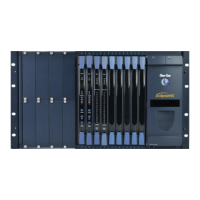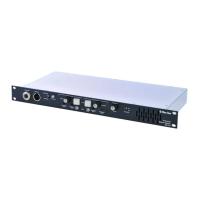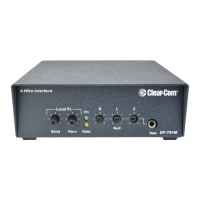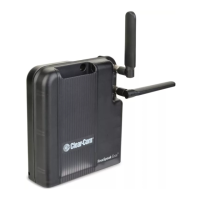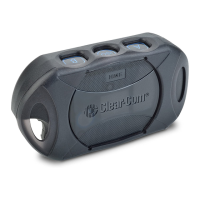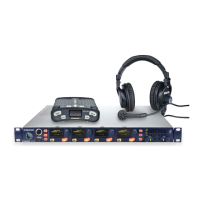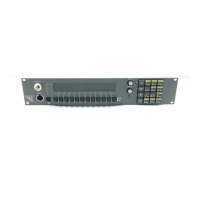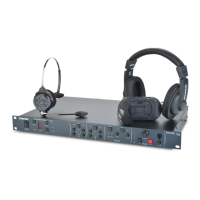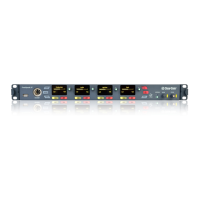Key to E-QUE rear panel connectors
LAN port (RJ-45)
The LAN port is used for diagnostic purposes.
DECT sync ports:
DECT Ref in
DECT Ref out
E1 / T1 Port 1 - 4(RJ-45)
E1 / T1 Port 5 - 8 (RJ-45)
Table 21: Key to E-QUE rear panel connectors
When multiple E-QUE cards are fitted in a rack, one of the cards generates a clock signal,
which all other cards lock to, to ensure that all antennas remain in sync. The system is
designed such that the leftmost card (seen from the front) is always the one which generates
this signal.
This means that if the leftmost card is removed, or a new card is fitted to the left of existing
cards, the antennas will lose lock for a few seconds as the cards re-configure themselves
and a new card starts generating the sync signal.
Where multiple connected matrices are used containing E-QUE cards the DECT reference
ports are connected as a daisy chain between the matrices to ensure that the DECT signals
are synchronized through all the E-QUE cards present in the matrices.
Note:
Failure to connect the DECT sync signal between matrices will result in poor utilization of the
DECT bandwidth, and the system may operate poorly in a congested RF environment.
The LAN port is used for diagnostic purposes.
100
Eclipse HX-Median User Guide

